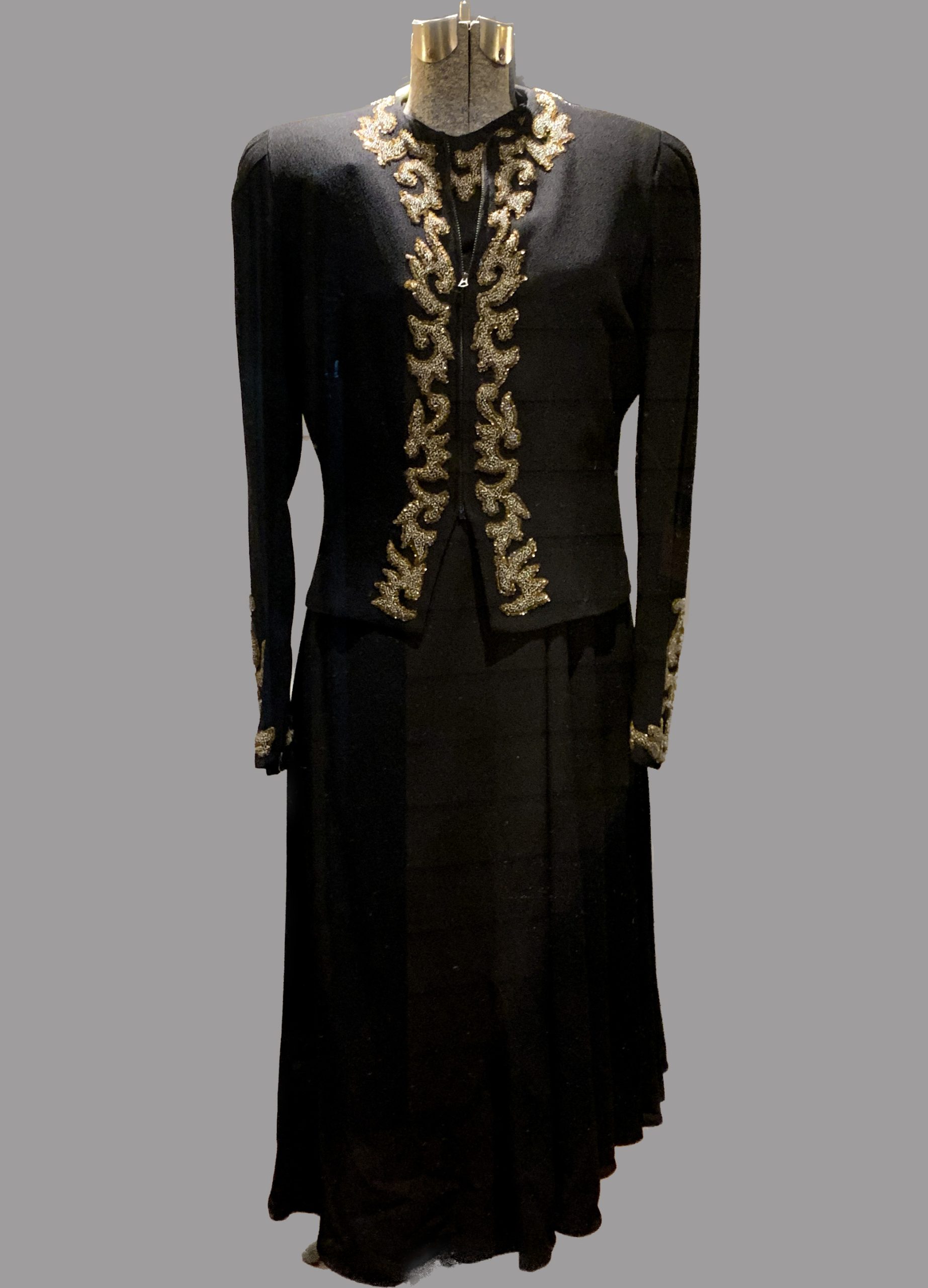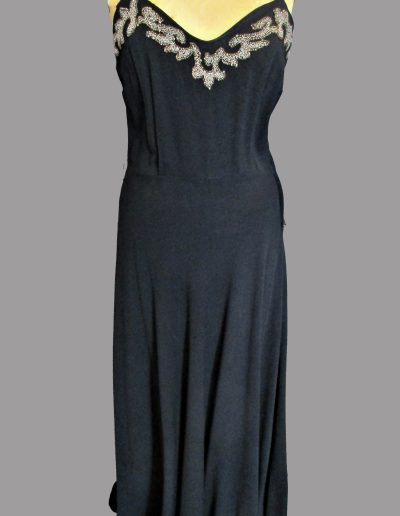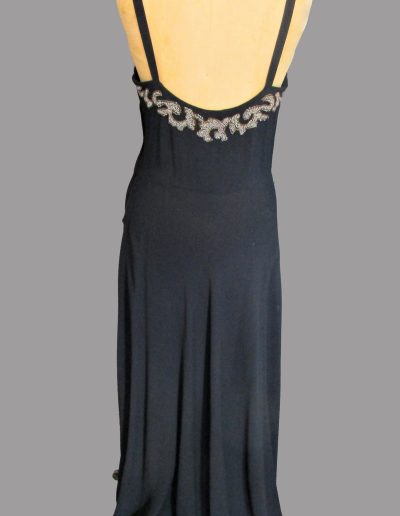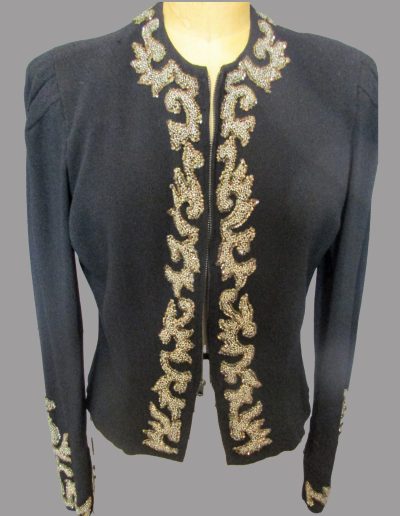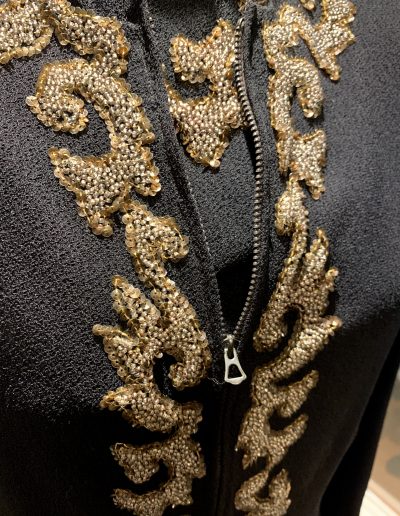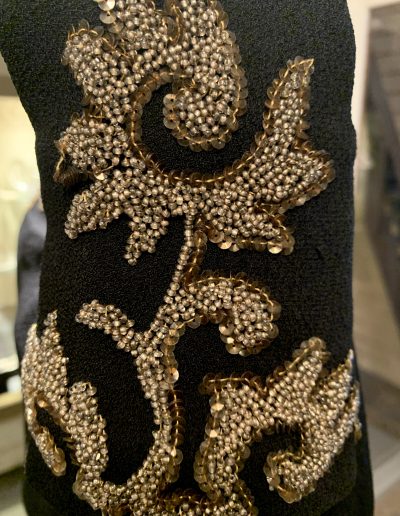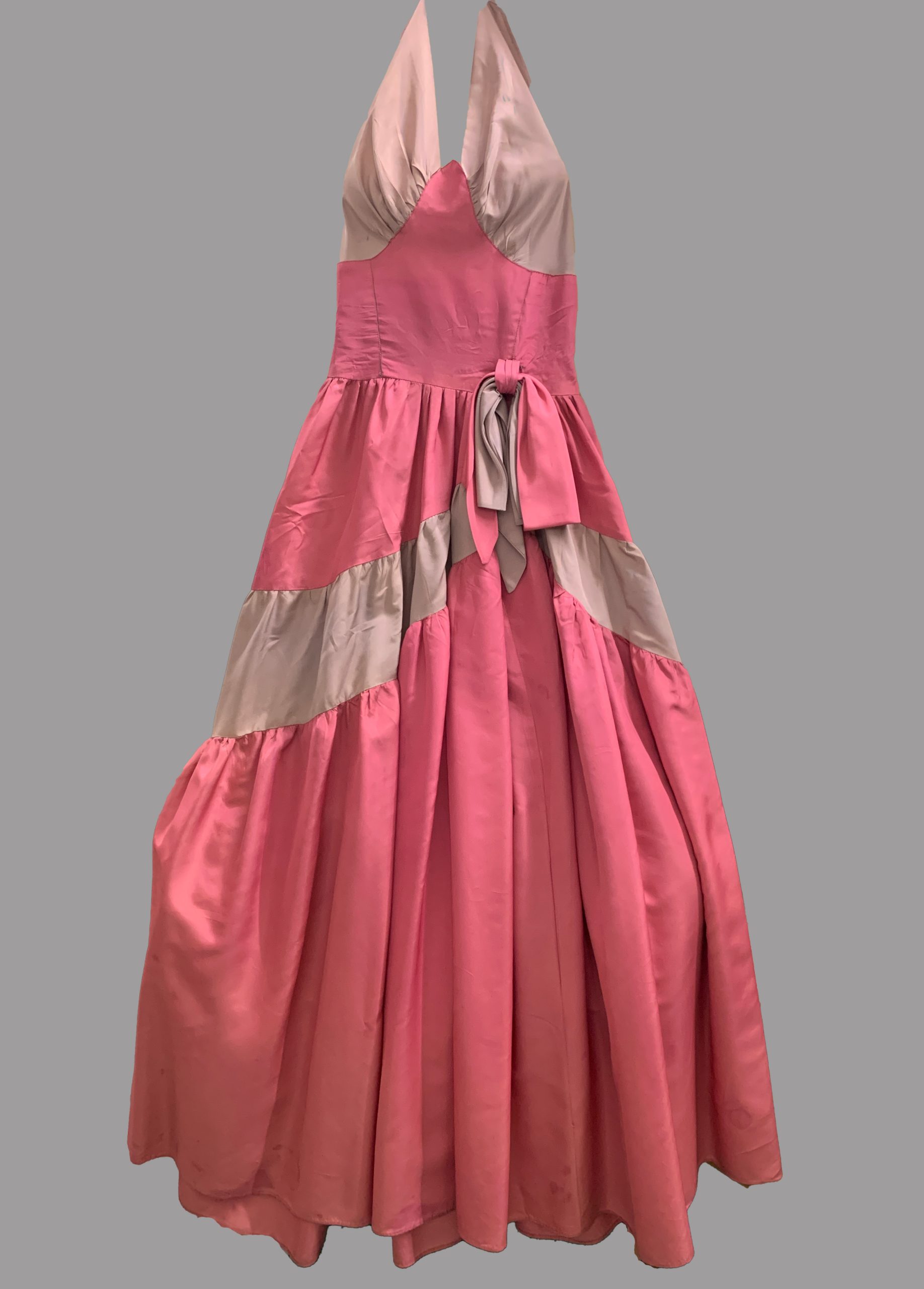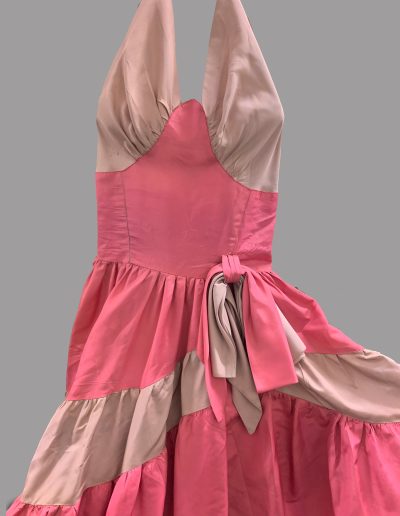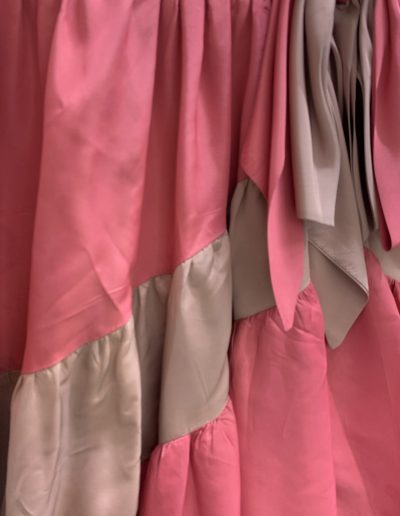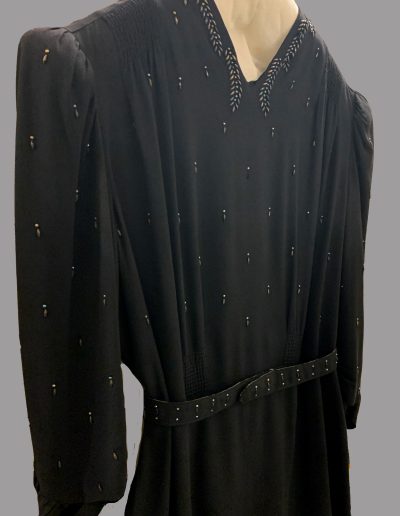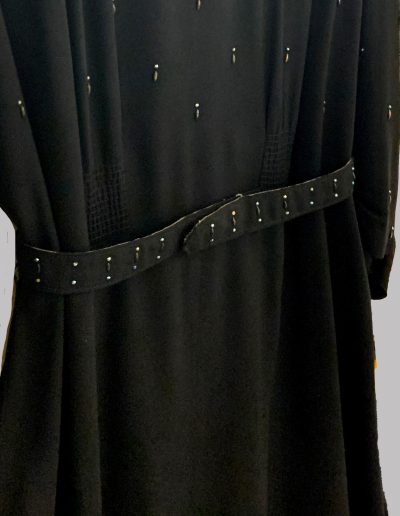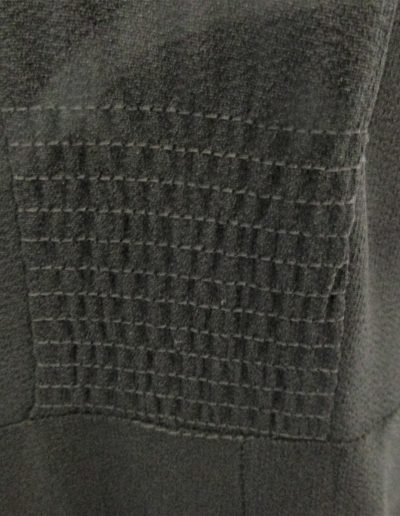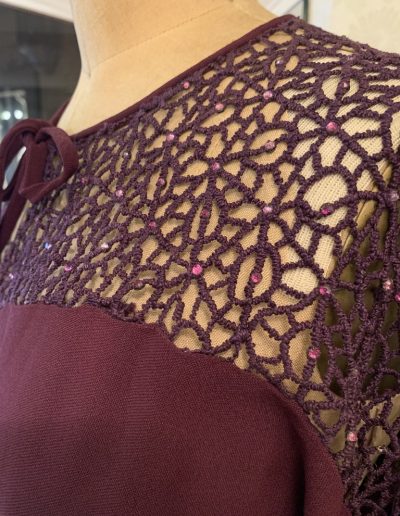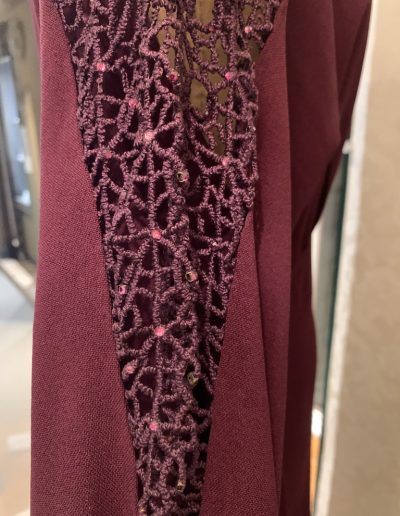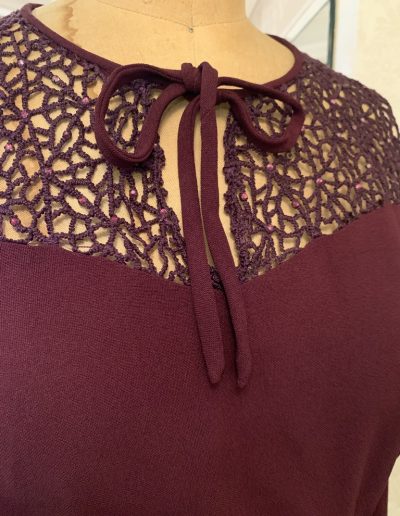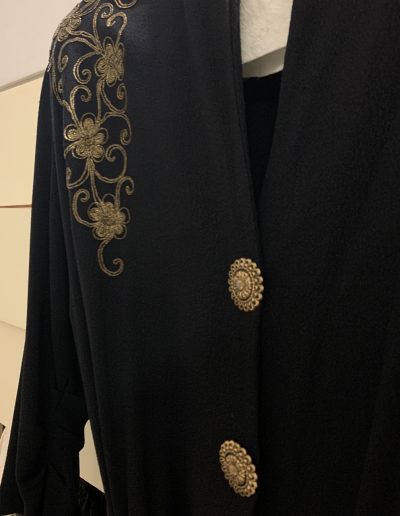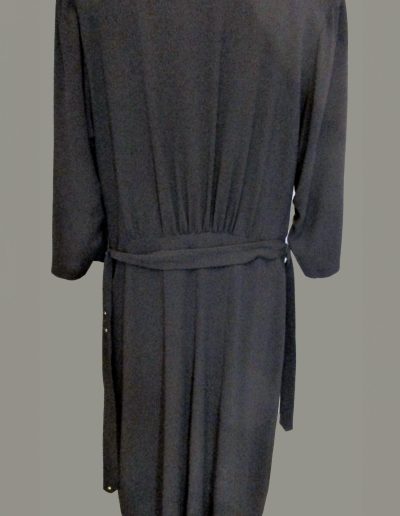Vintage Fashion: 1940s
THis is the first edition of a new virtual series entitled “Vintage Fashion”. We thought it was fitting to start with the 1940s in celebration of our founding year, 1948!
*Many thanks to historian, Christine Palmer, who did the research for this online exhibit
Although these dresses could have been purchased anywhere during the late 1930s and throughout the 1940s, a probability exists that they were bought at Bremer’s Department Store. In Bremerton, the first true department store was opened after World War I by Sophia and Matilda Bremer (the widow and daughter of William Bremer, the town’s founder). A dry-goods merchant had vacated one of their family’s many downtown properties and the two women updated it with new furnishings and lighting. Twice each year they purchased apparel in California for their department store which prospered with the patronage of Bremerton’s fashionable women. Their upscale Bremer’s Department Store had vacuum tubes to carry a customer’s money up to the office and send her change back. Credit cards were unheard of. But retail competition soon appeared.
In 1940 the American retailer J.C. Penney Company built a 40,000 square foot store in Bremerton at 302 Pacific Avenue. As the city’s population boomed during World War II, Penney’s determined that their building was not sufficient but failed to expand as the city’s population contracted after the war. In 1969, Bremerton’s Penney’s “traded spaces” with the hometown Bremer’s Department Store, which was located across the corner of Pacific Avenue at Burwell Street.
Bremer’s took over Penney’s building and Penney’s demolished most of the buildings on the block where Bremer’s had been located. This made room for a 150,000-square-foot store at 234 Pacific Avenue, complete with rooftop parking. Penney’s remained at this location until 1989 when it became the fifth and final anchor in Silverdale’s Kitsap Mall in 1989. The Bremerton Penney’s became a parking garage.
Dress Description
1940s unlined black rayon georgette (stretchy) crepe floor length evening dress with matching jacket. (No label). Original functional Talon metal zippers on jacket front and cuffs, and also on dress bodice left side. Jacket has sewn in shoulder pads. Dress is closely fitted through the bodice, waist and hips. Belt is missing but black thread belt stays are present. Both dress and jacket are decorated with remarkably intact matching gold and silver seed bead applique patterns. Applique on jacket appears on front along both sides of center zipper, and along neckline and cuffs. Applique on dress appears at top of bodice along front and back. Dress is supported with flat black rayon crepe spaghetti straps.
Fabric Information
Crepe is a weaving or fabric treatment method that results in a unique rippling, three-dimensional texture. Crepe can be made of silk, wool, or synthetic materials such as rayon. Crepe fabric with elasticity (usually silk or synthetic) is called georgette. Synthetic crepe is cheaper because it is not as breathable, and therefore not as comfortable, as silk or wool. Crepe fabric is generally used in lightweight types of clothing such as women’s cocktail or evening wear. Old, untreated, crepe fabric can be flammable. Crepe drapes nicely and clings to the body attractively. Most crepe needs to be dry cleaned and will shrink significantly when washed in a washing machine. In a few cases, crepe can be washed by hand in cold water and then laid flat to dry.
Rayon, also known as viscose, is a synthetic fabric made from the cellulose of plant-derived ingredients such as wood pulp. Rayon is very drapey, lightweight, and has a matte finish. Invented in Europe in 1846, rayon fibers were first manufactured in the United States in 1911. Called artificial silk until 1924 when the name rayon was coined, it was a less expensive alternative to silk clothing and accessories. Rayon is easily dyed in a wide range of colors.
Zipper History
 The Talon Zipper company was the world’s first zipper manufacturing company. It was founded in 1893 as the Universal Fastener Company, manufacturing hookless fasteners for shoes, but a relocation to Meadville, Pennsylvania led to it becoming the first manufacturer of zippers. The company flourished through the 1960s when the New York Times estimated that seven out of every ten zippers were made by Talon. The high demand for zippers created favorable conditions for the Talon Company, and zippers became Meadville’s most crucial industry. In 1968 the company was acquired by Textron Industries and encountered significant difficulties competing with zippers manufactured abroad. The company was sold, re-named and re-sold in 1982, 1996 and 2007 and all production is now in Asia. In April 2020, Talon International retrofitted its manufacturing facilities to provide medical and non-medical staff with Personal Protective Equipment (PPE). Talon supplies 3-ply face masks and face shields of medical grade, as well as cloth masks, gloves, alcohol wipes, hand sanitizers, and gowns for insulation. A part of the proceeds from PPE sales were to be donated to the organization Feeding America.
The Talon Zipper company was the world’s first zipper manufacturing company. It was founded in 1893 as the Universal Fastener Company, manufacturing hookless fasteners for shoes, but a relocation to Meadville, Pennsylvania led to it becoming the first manufacturer of zippers. The company flourished through the 1960s when the New York Times estimated that seven out of every ten zippers were made by Talon. The high demand for zippers created favorable conditions for the Talon Company, and zippers became Meadville’s most crucial industry. In 1968 the company was acquired by Textron Industries and encountered significant difficulties competing with zippers manufactured abroad. The company was sold, re-named and re-sold in 1982, 1996 and 2007 and all production is now in Asia. In April 2020, Talon International retrofitted its manufacturing facilities to provide medical and non-medical staff with Personal Protective Equipment (PPE). Talon supplies 3-ply face masks and face shields of medical grade, as well as cloth masks, gloves, alcohol wipes, hand sanitizers, and gowns for insulation. A part of the proceeds from PPE sales were to be donated to the organization Feeding America.
Donor Story
Unfortunately, not much is known about who wore this dress. The donor was David Foote in 2011. No Bremerton area residents named Foote traced back to David in Polk’s Directory, Ancestry.com, Find-A-Grave, Legacy.com, or many other sources. Provenance for this dress remains unknown
Dress Description
1940s homemade unlined synthetic taffeta floor length gown with halter top. No label. Left side bodice has original functioning metal zipper without a manufacturer identification. Pink and gray taffeta has been pieced alternately in the bouffant skirt, halter top, and side waist bow. Waist extremely small and would not fit on dress form. This dress was hand sewn for a very tiny young woman.
Fabric Information
Taffeta is a crisp, smooth fabric made from silk or synthetic fibers. This fabric originated in Baghdad as a silk product sometime in the 12th century. It holds its shape better than many other fabrics and does not sag or drape. Both silk and synthetic taffeta are valued for their shine, crisp texture, slippery smoothness, rich and luxurious feel and appearance, as well as the soft rustling sound made when the wearer is walking. Before the 1950s, taffeta was manufactured in Italy, France, and Japan and imported to the United States. Throughout the 20th century, taffeta was commonly used for women’s formal attire including prom and wedding gowns. Synthetic taffeta is much cheaper than silk taffeta. Old silk taffeta sometimes deteriorates and the fabric shreds into small pieces. This dress may have been hand sewn in Tennessee for Ernestine at the time George was courting her before their 1945 wedding.
Style History
Halter-top dress styles were popular with young women from the 1930s through the 1970s. During the 1940s, home sewing patterns for halter-top gowns were commonly sold by Simplicity, Butterick and other manufacturers. Many of these old dress patterns are now sold online through Etsy and Ebay, such as this 1940’s Butterick sewing pattern.
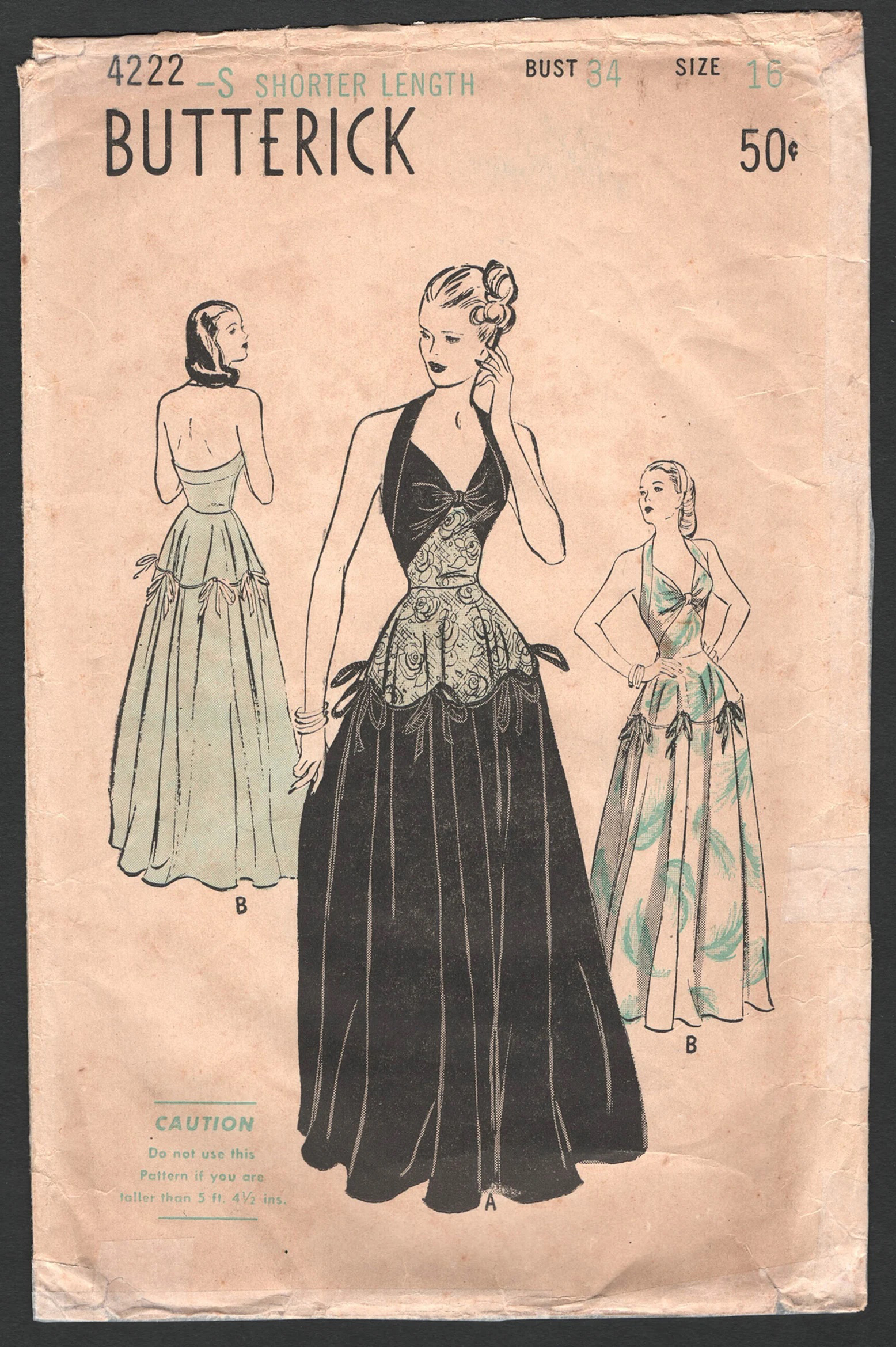
Donor Story
Donor was Cyndy Smith in 2010. Documentation donated by Cyndy with this dress includes her family tree listing one ancestor, Albert George King, who married Tennessee resident Alethea Ernestine Jones in 1945. Alethea (1920-2010) used her middle name Ernestine, and she is the only ancestor on Cyndy’s family tree who would have been the right age to wear this 1940s taffeta gown when she was in her early 20s. George was a flying instructor with the Navy Flying Reserve Corps during World War II and grew up on in the multi-generation King family home Burwell Street. The 1946 Polk’s Directory and the 1950 census on Ancestry.com listed Ernestine as working behind the reception desk in a Bremerton dental office. Both George and Ernestine became certified flying instructors, operated a local flight school, and were instrumental in establishing the Bremerton National Airport along State Highway 3.
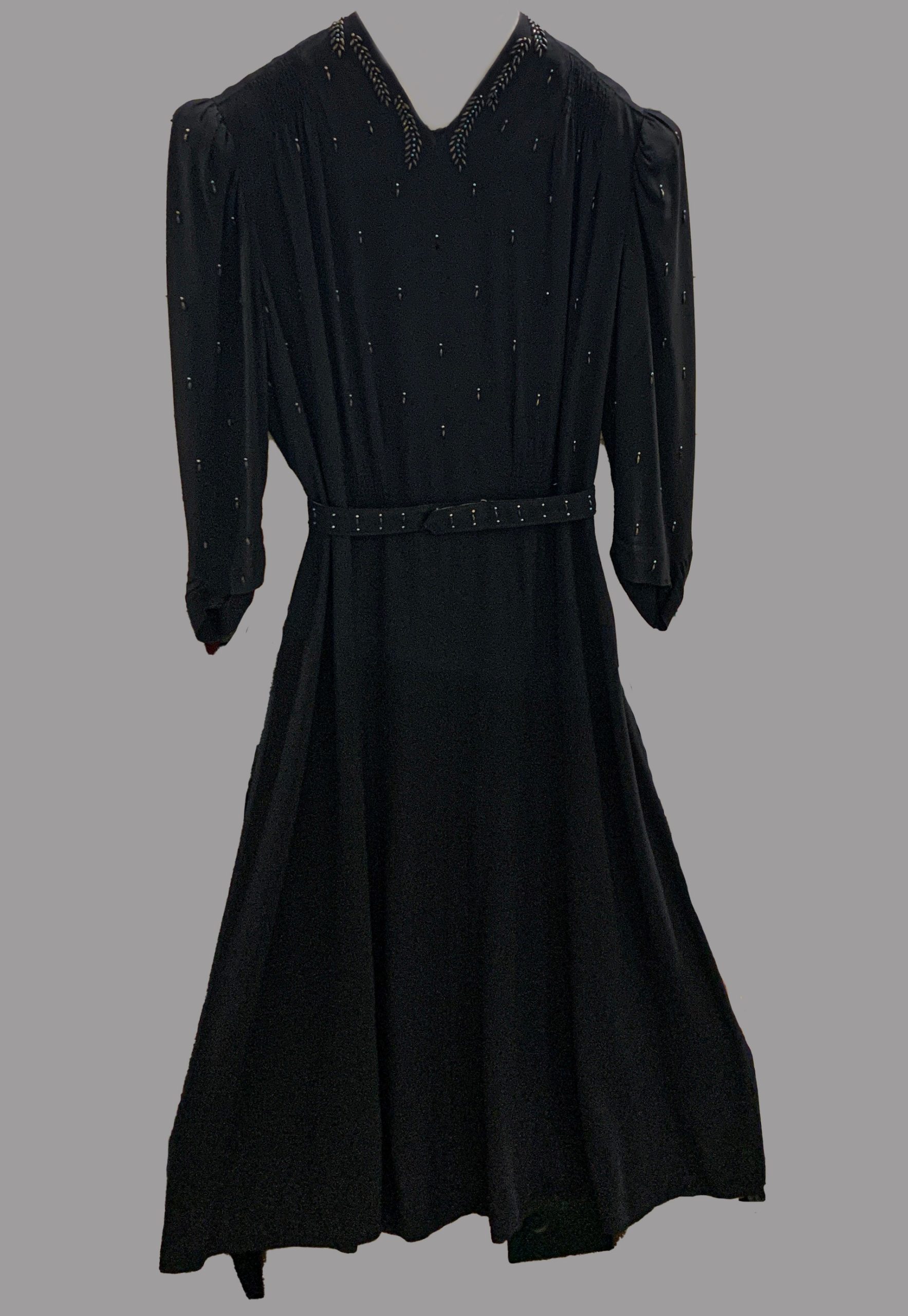
Dress Description
1940s unlined black non-stretchy rayon crepe beaded dress and belt with “Mme Renauld Frocks” label. The beading is scattered on the front and back of the bodice, scattered on the sleeves and belt, but closely patterned around the v-neck. The beads are comprised of both round and elongated tiny shapes and have been punched into the fabric, not glued or sewn. The v-neck is styled tightly around the neck. Decorative stitched ruched squares are inserted into the fabric on both shoulders and both sides of the waist. The three-quarter length sleeves have ruched and pointed cuffs. Small shoulder pads are sewn into the sleeve tops. The belt has a felt backing and is closed with metal snaps labeled “RF”. Original metal Talon zippers are on left side of bodice and back of neckline.
Designer Information
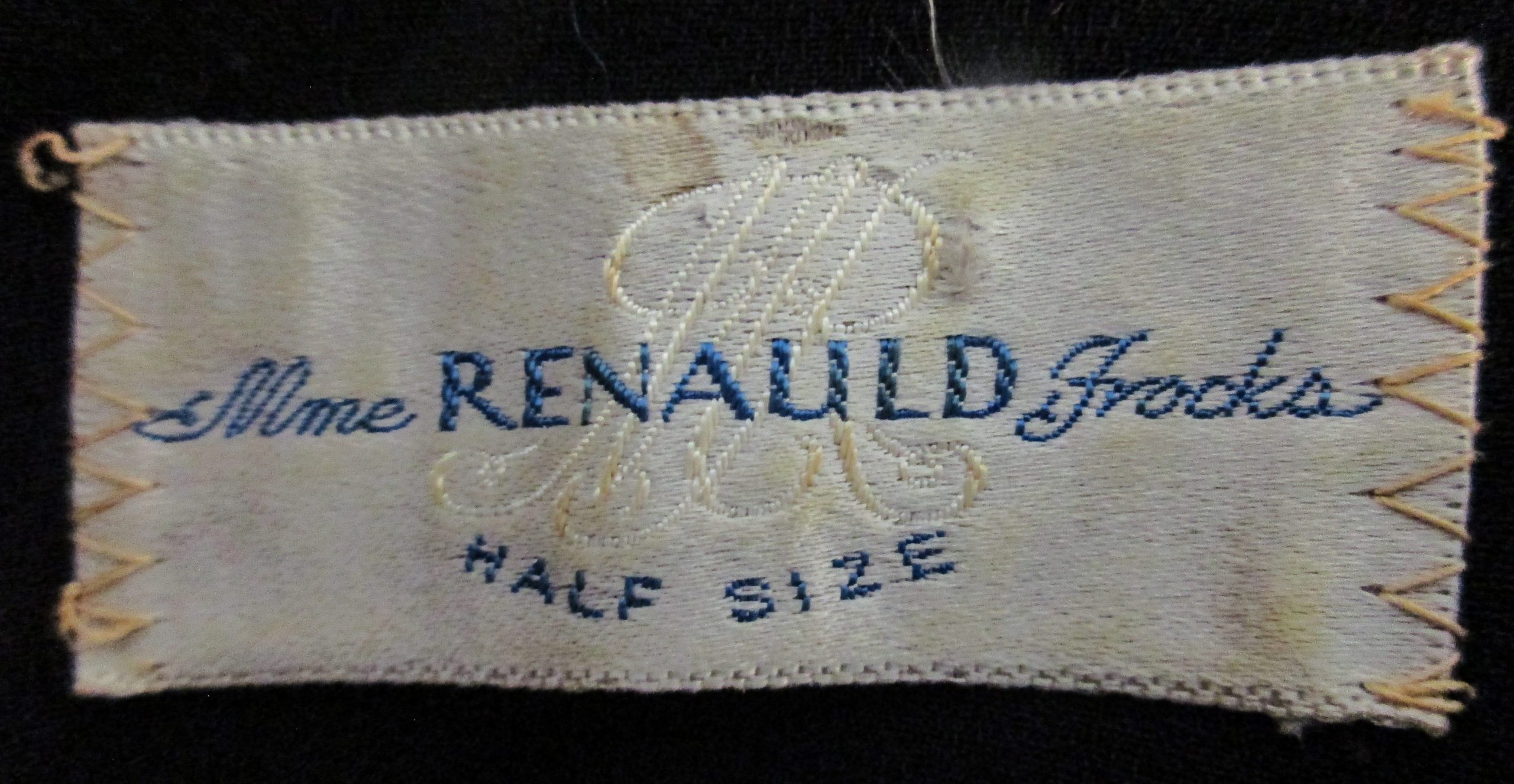 No online resource provided background information on the “Mme Renauld Frocks” label. However, other women’s apparel bearing this label is currently for sale on Poshmark, Ebay and Etsy and newspaper ads for women’s apparel during the 1940s also mention this label. Likely “Mme Renauld Frocks” was a now extinct American manufacturer of mid-priced women’s dresses.
No online resource provided background information on the “Mme Renauld Frocks” label. However, other women’s apparel bearing this label is currently for sale on Poshmark, Ebay and Etsy and newspaper ads for women’s apparel during the 1940s also mention this label. Likely “Mme Renauld Frocks” was a now extinct American manufacturer of mid-priced women’s dresses.
Fabric Details
Ruching is a fabric manipulation technique used to give a garment texture and dimension by repeatedly pleating and folding the material. Designers use this overlay of gathered fabric to embellish sleeves, bodices, shirts, and skirts. The ruffled or pleated pattern creates a contrast against the rest of the clothing item or accessory. There are a few key differences between ruching and shirring. Ruching creates a rippled or folded aesthetic that equally distributes fabric throughout a garment. Shirring is when two or more rows of fabric are gathered and cinched together by an elastic thread (not to be confused with smocking, which uses a hand embroidery stitch rather than elastic to create a similar effect). Ruching creates a voluminous and fuller outfit look, while a shirred garment provides a more stretchy and form-fitting silhouette.
Donor Story
 The 1995 donor was Les Schmuck of Poulsbo (died 2015). His mother, Calla Scheib Schmuck (1891-1982), wore this dress to a wedding in 1941 when she was 50 years old. She worked as a lab technician at the Puget Sound Naval Shipyard. The 1946 Polk’s Directory listed her as living in rural Poulsbo at RD3, Box 600. The 1938-1946 Polk’s Directories listed Charles and Jennie Scheib, living at 307 Summit Avenue S. in Bremerton, but they are not related to Calla.
The 1995 donor was Les Schmuck of Poulsbo (died 2015). His mother, Calla Scheib Schmuck (1891-1982), wore this dress to a wedding in 1941 when she was 50 years old. She worked as a lab technician at the Puget Sound Naval Shipyard. The 1946 Polk’s Directory listed her as living in rural Poulsbo at RD3, Box 600. The 1938-1946 Polk’s Directories listed Charles and Jennie Scheib, living at 307 Summit Avenue S. in Bremerton, but they are not related to Calla.
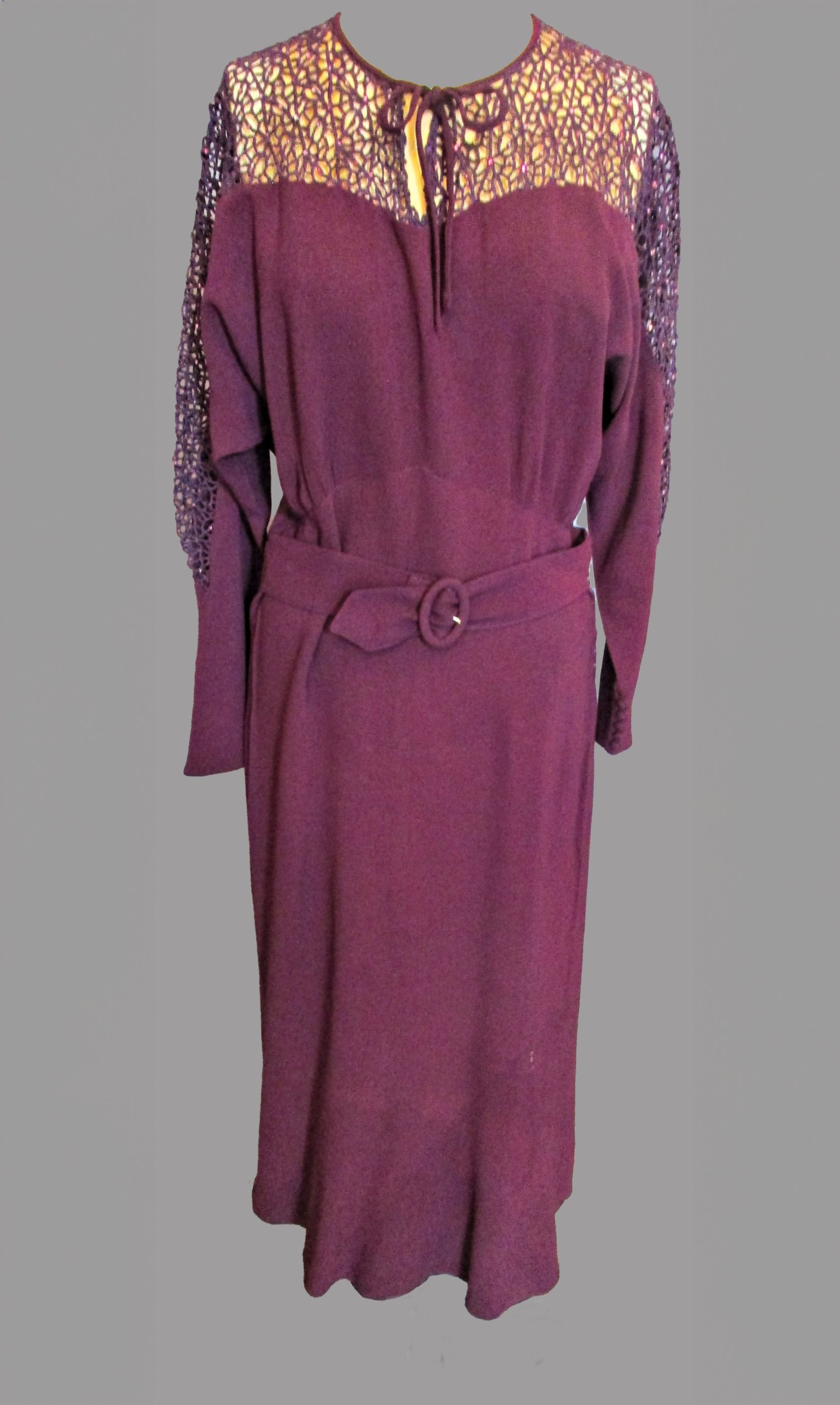
Dress Description
Purple unlined rayon crepe 1940s cocktail dress with self-belt bearing an oval crepe-covered buckle, and a “Jean Patou” label. The shoulders and upper sleeves are comprised of an open network constructed of machine-made, chain-stitch rayon. A core thread has been wrapped with two other threads, one fine and one bulky to create the nubby effect of the cords used in this network. It is not crochet, knitted, tatting or macrame. As it is not fine handwork, likely it was mass produced in the US before World War II as a decorative element for women’s apparel. The neckline has a string tie to help the network’s shoulders pull snugly. The rhinestones scattered throughout the network are prong set, not glued. The full-length sleeves have a row of five decorative buttons at the cuffs. The dress has no zipper.
Designer Information
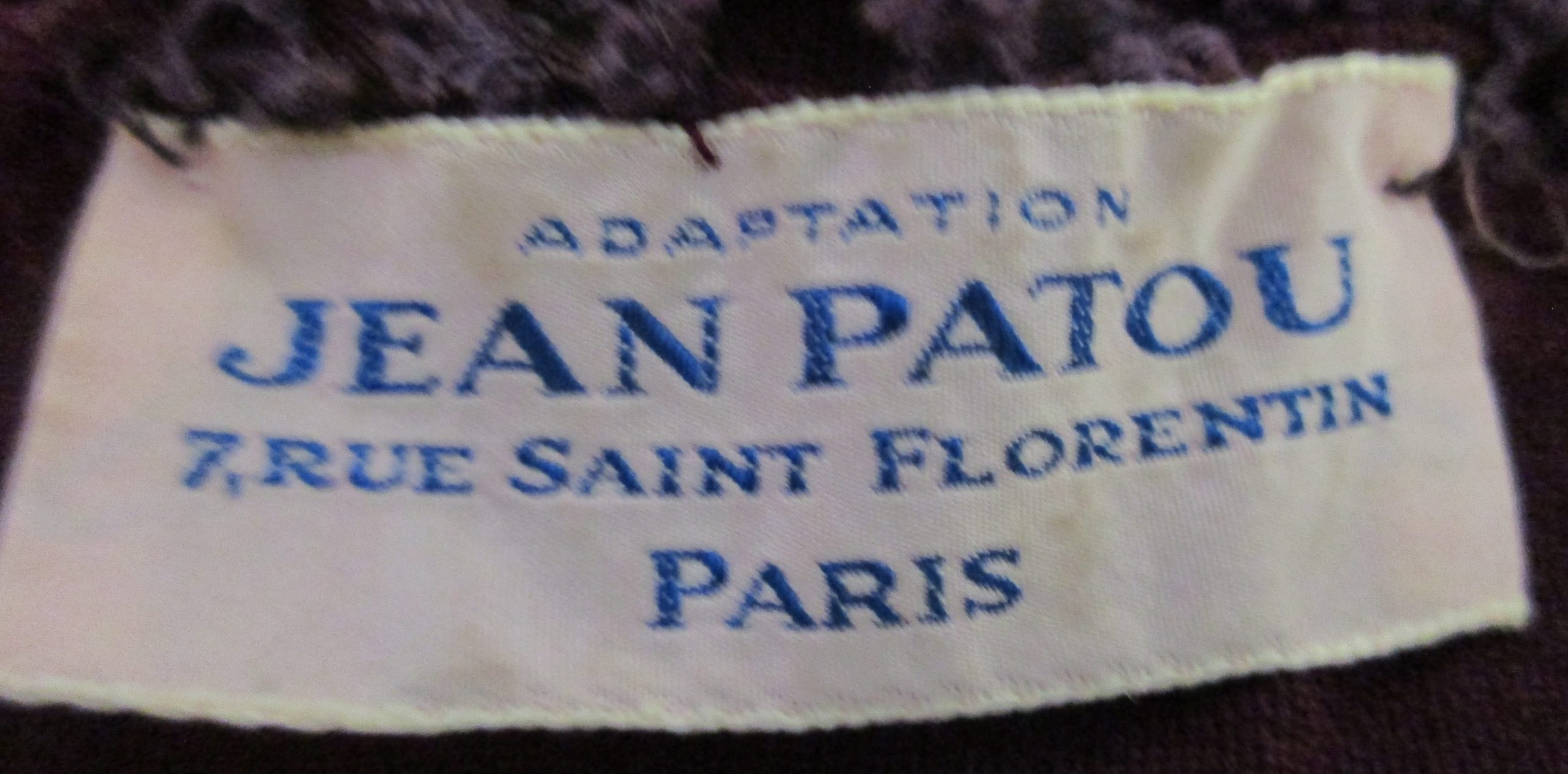 Although it bears a notable designer label, the dress is not of distinctive material or construction and was likely marketed to customers seeking attractive but affordable dresses. There are some cases where a famous designer’s label has been sewn into an unremarkable vintage dress, but this label appears to be attached with original machine stitching. Noted Parisian couturier Jean Patou achieved international success in the early 20th century until the global economic crash in 1929 just as he was opening his New York salon. He then created “Joy” perfume to relaunch his brand but died in 1936 at age 48, so his sister and her husband took over his fashion design house.
Although it bears a notable designer label, the dress is not of distinctive material or construction and was likely marketed to customers seeking attractive but affordable dresses. There are some cases where a famous designer’s label has been sewn into an unremarkable vintage dress, but this label appears to be attached with original machine stitching. Noted Parisian couturier Jean Patou achieved international success in the early 20th century until the global economic crash in 1929 just as he was opening his New York salon. He then created “Joy” perfume to relaunch his brand but died in 1936 at age 48, so his sister and her husband took over his fashion design house.

Without its founder, the Jean Patou brand lost its aura and lacked direction in the 1940s, although “Joy” perfume continued to be popular. Other artistic directors took over fashion design for the Jean Patou brand after the 1950s: Marc Bohan, Karl Lagerfeld, and Jean Paul Gaultier among others. The last clothing collection was in 1987 and in 2018 the international conglomerate LVMH took over this design brand. As this dress demonstrates, even though the Jean Patou fashion label was faltering in the 1940s, clearly it was still generating women’s apparel directed by his brother-in-law, Raymond Barbas. No online resources revealed who designed apparel for the Jean Patou label during the 1940s. Women’s apparel bearing this label from the 1940s is currently for sale on Poshmark, Ebay and Etsy and newspaper ads for women’s apparel during the 1940s also mention this label.
Donor Story
The 1997 donor was William E. Mahan of Bremerton. The dress belonged to his mother Imogene who lived with his father William A. Mahan at 1512 8th Street in Bremerton where William E. grew up. Polk’s Directory for 1938-1946 reveal that William A. was a machinist at the Puget Sound Navy Yard during the 1940s and William E. was a bank bookkeeper. William E. remembered that his mother sewed and felt that the basted alterations on skirt of this dress were done by her.
Imogene was 63 years old by 1950 and a widow. She was working as the housekeeper at the Bremerton Naval Shipyard Officers’ Club and possibly wore this dress to events there. One wonders what underwear she would have worn beneath this dress during an era when full slips were worn beneath all dresses at all times. What could she have worn beneath the bodice which would not have been revealed beneath the decorative network on her shoulders? Elastic was rarely available to the American population during the World War II years, and strapless bras were only invented in the 1930s so would have been very daring for a 63-year-old woman. As a result, Imogene likely did not wear a strapless bra and an elasticized waist half-slip under this dress. And a full slip, even in a neutral skin tone, would have revealed straps beneath the open work.
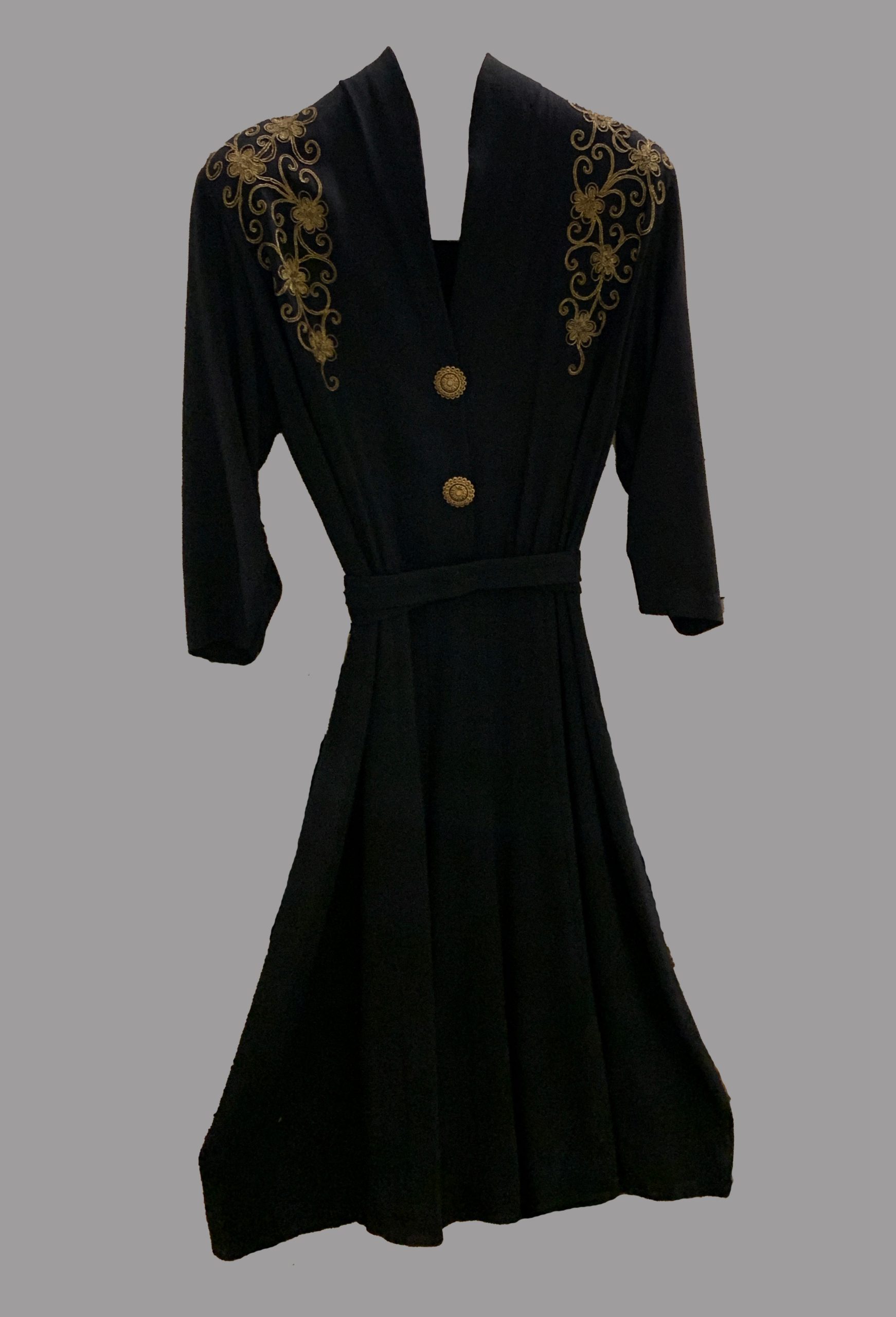
Dress Description
1940s unlined black rayon crepe dress and belt. Dress has a shawl collar and gold thread applique decorations are stitched on shoulders and front of bodice. Two gold starburst plastic buttons on the lower bodice are decorative and have no buttonholes. The dress has no label. A functioning original metal Talon zipper is on the left side of the bodice. Shoulder pads are safety pinned inside the shoulders of the dress.
Donor Story
Unfortunately, no donor information is available.
Fabric Information
Crepe is a weaving or fabric treatment method that results in a unique rippling, three-dimensional texture. Crepe can be made of silk, wool, or synthetic materials such as rayon. Crepe fabric with elasticity (usually silk or synthetic) is called georgette. Synthetic crepe is cheaper because it is not as breathable, and therefore not as comfortable, as silk or wool. Crepe fabric is generally used in lightweight types of clothing such as women’s cocktail or evening wear. Old, untreated, crepe fabric can be flammable. Crepe drapes nicely and clings to the body attractively. Most crepe needs to be dry cleaned and will shrink significantly when washed in a washing machine. In a few cases, crepe can be washed by hand in cold water and then laid flat to dry.
Rayon, also known as viscose, is a synthetic fabric made from the cellulose of plant-derived ingredients such as wood pulp. Rayon is very drapey, lightweight, and has a matte finish. Invented in Europe in 1846, rayon fibers were first manufactured in the United States in 1911. Called artificial silk until 1924 when the name rayon was coined, it was a less expensive alternative to silk clothing and accessories. Rayon is easily dyed in a wide range of colors.

